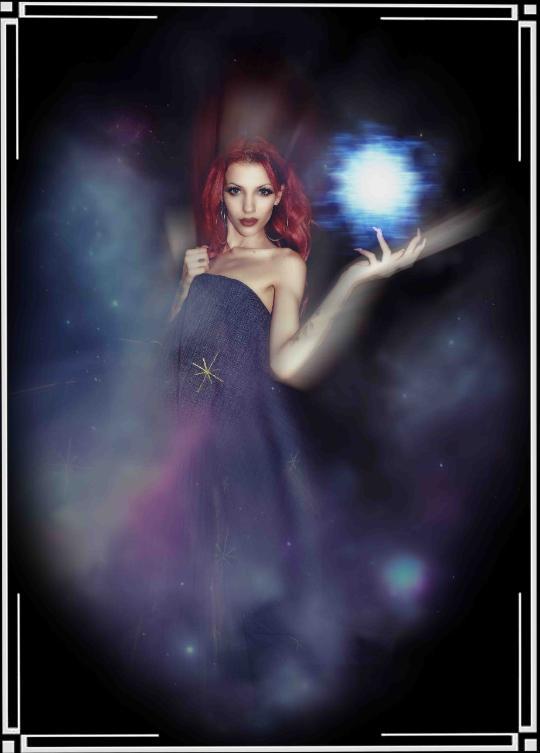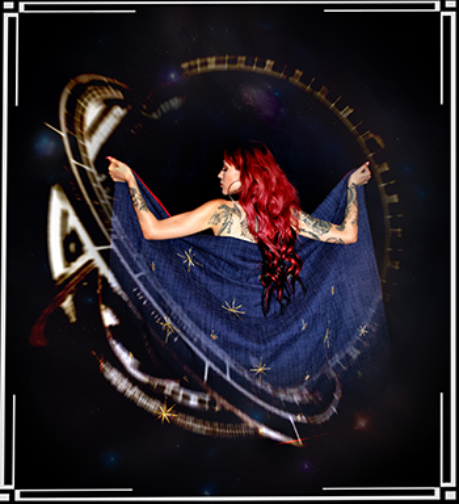,(2).png)
In this month's ACE & Creativity, Marios Koutsoukos writes about how he has endeavoured to capture Neoplatonic Mysticism with Artistic Nude Photography.
The creative side of things has always been an exquisite temptation for me. I believe there is no better way to internalise theoretical knowledge than to apply it to something creative; something that is fun and fulfilling.
Although I’ve been a writer for more than twenty years and I consider this to be my primary craft, I’m always curious to fiddle around with other forms of art as well. That is why when I first started my PhD studies at the University of Liverpool I took up photography. The visual medium, after all, is something that has exercised potent influence on the human psyche for countless centuries. If the written word offers a more contemplative approach to a narrative, then the visual interpretation of it is a story that goes beyond words and tells itself through the senses.
Discovering Iamblichus
My research work in ACE focused on Iamblichus, the 4th century Syrian Neoplatonic philosopher and mystic, who founded a most influential school of theurgy. Theurgy was a highly complicated ceremonial practice, somewhere between priest-craft and magic. It was intended to bring the practitioner into direct contact with the beings that inhabit “higher realities” than our own. In his book “On the Mysteries of the Egyptians”, which was the focus of my thesis, Iamblichus devotes an entire chapter to describing in minute and often outrageous detail the denizens of these “higher realities”. In fact, he calls them “the races of our betters”, since spiritual entities are not hindered by the materiality of the physical form and, therefore, have a better understanding or connection, if you will, with the “truly true” incorporeal reality that surrounds the human existence.
Iamblichus presents a very intricate hierarchy of beings: Souls, Daemons, Hylic Archons, Cosmic Archons, Angels, Archangels and Gods. Although he details very explicitly the characteristic traits each of these classes of incorporeal beings exhibits when they appear to mortal eyes, he fails to give a concise description of their actual form. In my opinion, this is because he is essentially trying to put into words visions of altered states of consciousness; the sort of dream-like sight that is able to perceive one form and “know” inwardly a myriad other forms that are connected to it.
Depicting bodiless entities into forms understood by all
This seeming lack of precision on the part of the Syrian sage inspired me to try my hand at depicting these bodiless entities in a form that would be both understood by mundane human perception as well as be suggestive of so much more. And what better way to do that, I decided, than artistic nude photography?
Natural forms, devoid of all the trappings devised by human artifice, are the closest to the divine our physical eyes can behold. Furthermore, the naked human form reflects even more so the divine imprint that the Platonic world of Ideas has “stamped” into the realm of material creation, if we accept that man is the only creature endowed with the ability to reason about otherworldly matters.
Collaborating with Ariella Gkiakou
To that end, I collaborated with Ariella Gkiakou, a professional model from Greece, in order to create my “Manual of Incorporeal Anatomy: The Celestial Hierarchy of Iamblichus of Chalchis”. It must be noted that Ariella has no definitive connection to Classicism as an academic discipline, although the public Greek school curriculum does make sure every Greek gets a basic understanding of Platonic thought (if they avoid the pitfall of hating it with a vengeance due to drab and dreary state-regulated delivery of these courses). I considered her lack of expertise on the subject as an advantage to the overall artistic merit of the project, since Ariella walked into it without any personal bias or preconception of what she was supposed to embody. In my opinion, her “pristine” interpretations of the celestial hierarchy possess a certain spontaneity and priceless originality that one would expect from the epiphanic visions that Iamblichus describes. At the same time, I feel that she contributed greatly in bringing these concepts and often abstruse ideas about the metaphysical on a more tangible level of reality. In a way, she did not only act as my model but also as my “interpreter”.

Ariella Gkiakou photographed for “Manual of Incorporeal Anatomy: The Celestial Hierarchy of Iamblichus of Chalchis”
This work is essentially a photobook, something intended to enhance the aesthetic of one’s coffee table, while at the same time offering the non-specialised reader with an introduction to Iamblichus’ view on the unseen inhabitants of the cosmos.
Employing Ariella’s exquisite skill at bodily expression as well as some additional photo enhancing techniques through photoshop, I endeavoured to capture the essence of Souls, Daemons, Archons, Angels, Archangels and Gods through my lens. In addition to this, each set of photographs corresponding to each class of being is accompanied by my own dramatized translation of Iamblichus’ original Greek text into English. I envisioned the Syrian mystic teaching one of his pupils in private about the otherworldly wonders that surround mortalkind and rendered the -often downright baffling- primary source into as highly accessible a narrative as possible for the non-specialised reader.

Offering an introduction to Iamblichus’ view on the unseen inhabitants of the cosmos.
The presence of explicit nudity in this quaint little volume reflects the idea of the heroic or divinised nude that we, classicists, are so familiar with through the visual arts of Graeco-Roman antiquity. It is my hope that it will inspire the same viewpoint to the lay reader and thus contribute to the dissemination of a long-lost virtue of the classical world: the unabashed celebration of the human form, free from the narrow constraints of sexualisation or puritanical criticism.
If I may borrow a phrase from Iamblichus, my “Manual of Incorporeal Anatomy” aims to “show as body what is not body to the physical eyes”. In this age so deeply mired in materiality, perhaps what we need to be uplifted is an incorporeal perspective on life.
For more details, feel free to visit Marios’ website: www.marioskoutsoukos.com